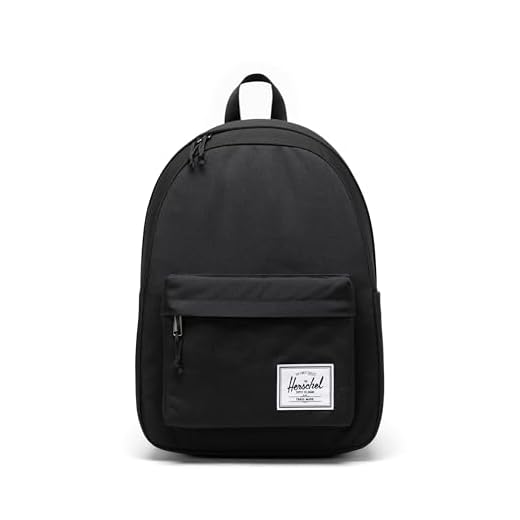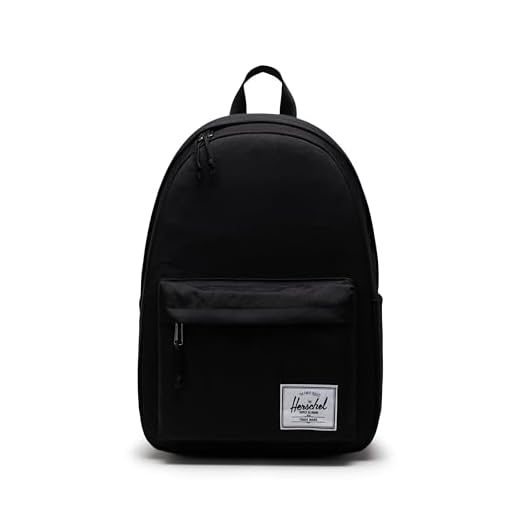
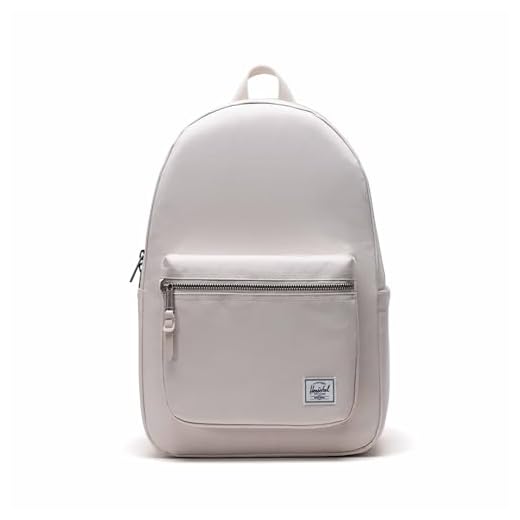
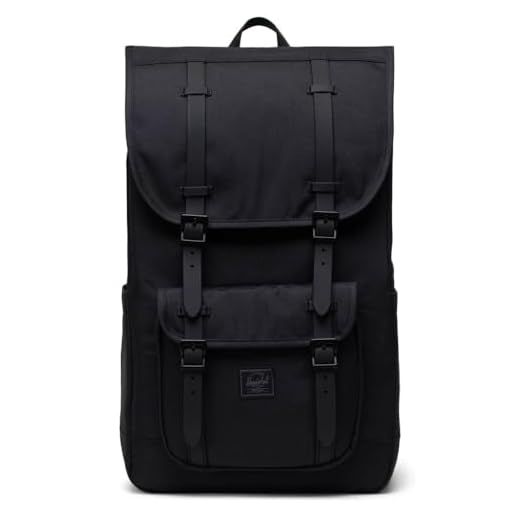
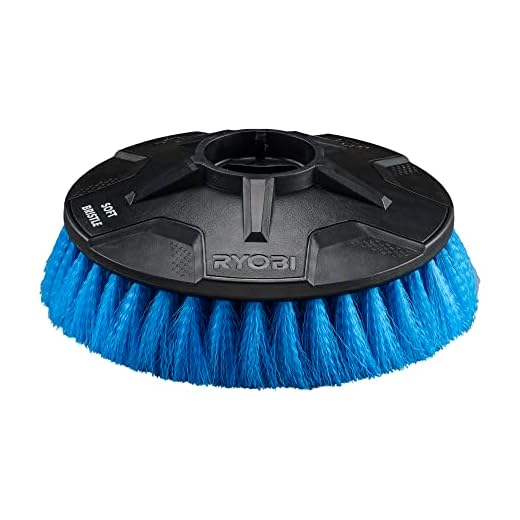
Empty all compartments, remove loose debris with a soft brush and unzip every pocket. Detach removable straps or accessories; store metal items separately to avoid rust marks. Pre‑treat oil or grease spots with a few drops of mild dish soap, gently work in with a soft toothbrush for 30–60 seconds, then blot with a clean cloth.
Fill a basin with 8–12 liters of water at about 30°C and add 5–10 mL (1–2 teaspoons) of a gentle laundry detergent per 4 liters. Submerge the pack, soak 10–15 minutes, then gently agitate the fabric–avoid scrubbing seams aggressively. Rinse under running water or with multiple fresh basins until suds disappear. Press out excess water by rolling the pack inside a towel; do not twist or wring.
Machine laundering only when the care label explicitly permits: use a front‑loading washer on the delicate cycle, cold water, and place the item inside a mesh laundry bag or pillowcase. Select a short spin or no spin; remove immediately to prevent deformation. Never use bleach, fabric softener, high heat cycles or tumble drying–exposure to strong heat can warp coatings and shrink fabrics.
Dry flat or hang by the straps in a shaded, well‑ventilated area, stuffing the main compartment with dry towels to preserve shape; typical drying time ranges from 12 to 48 hours depending on humidity. Wipe leather or faux‑leather accents with a damp cloth and mild soap–do not submerge–and apply a small amount of leather conditioner once fully dry. Lubricate zipper teeth lightly with paraffin or zipper wax if movement slows.
Cleaning a canvas daypack: practical, measured instructions
Machine-clean on a delicate cycle with cold water (<30°C / 86°F) using 1/4 cup (60 ml) mild liquid detergent only when the care tag permits; otherwise perform targeted hand-cleaning with diluted detergent.
Machine method (when tag allows)
- Empty all compartments and remove detachable components (lanyards, straps, key clips).
- Fasten zippers and buckles; place the pack inside a pillowcase or mesh laundry bag to protect fabric and hardware.
- Load with 2–3 bath towels to balance the drum.
- Select delicate/delicate-like cycle, cold rinse, short spin (15–30 minutes).
- Use mild liquid detergent only; no bleach, no fabric softener, no powder detergents with brighteners.
- Immediately remove from machine; reshape and air-dry flat or hung in shaded, well-ventilated area for 24–48 hours.
Spot treatment and trim care
- Grease/oil stains: apply a drop of grease-cutting dish soap, work gently with a soft toothbrush, wait 10 minutes, rinse with cold water.
- Sweat or salt marks: mix white vinegar and water 1:1, dab with cloth, rinse; repeat once if needed.
- Ink: test hidden seam first; blot with isopropyl alcohol (70%) on cotton swab, do not rub; rinse and air-dry.
- Mold/mildew: brush off dry spores outside, then wipe with 1:4 white vinegar:water solution, rinse, dry outdoors briefly away from direct sun.
- Leather or suede trims: remove before cleaning when possible; clean leather with saddle soap or gentle leather cleaner, do not submerge; condition after full drying. Suede requires a suede brush and specialist cleaner.
- Zippers and hardware: clear debris with a soft brush, lubricate metal teeth with paraffin wax or silicone zipper lubricant once dry.
Hand-soak recipe for full-surface cleaning: mix 1 tsp (5 ml) mild liquid detergent per 2 L of cold water, submerge for 10–15 minutes, agitate gently, rinse thoroughly until water runs clear.
- Reshaping: stuff cavities with dry towels while damp fabric dries to maintain profile.
- Drying: avoid tumble dryers and prolonged direct sunlight; rotate towels if internal padding holds moisture.
- Frequency: light spot-cleaning every 2–4 weeks with regular use; full cleaning 3–6 times per year or when visibly soiled.
- Water-repellency restore: apply a fluorine-free DWR spray from 10–15 cm in even passes; cure 24 hours. If fabric tolerates low heat, brief gentle heat (hairdryer on low for 30–60 seconds) can improve bead-up.
Check the care label and identify fabric panels
Check the manufacturer’s sewn care label immediately and locate it inside the main compartment seam, within an internal zip pocket or beneath the top handle; the label provides the definitive cleaning symbols and temperature limits for that specific model.
Read symbols and temperature ratings
Interpret common pictograms: a tub with a number = maximum machine temperature (typically 30°C or 40°C), a hand-in-tub = hand wash only, a crossed tub = do not immerse, a triangle with an X = no bleach, a circle = dry-clean recommended (letters denote solvent type), a crossed circle = no dry-clean, a square with a circle = tumble dry (dots indicate heat level), iron dots = max ironing temperature. If the label is missing or unreadable, default to gentle treatment and avoid machine tumbling or high heat.
Identify fabric panels and match treatments
Main body: often polyester, nylon or cotton canvas. If label permits machine laundering, use gentle cycle at the indicated temperature; otherwise, perform spot-cleaning with a dilution of 1 teaspoon mild liquid detergent per 250 ml (1 cup) lukewarm water. Test on an inconspicuous seam before treating visible areas.
Base and reinforced panels: heavy canvas, coated fabric or leather. Coated bases tolerate surface wiping with a damp cloth; leather or suede panels require leather cleaner/conditioner only and must not be soaked or placed in a machine.
Straps and webbing: typically nylon or polypropylene. These tolerate hand scrubbing with a soft brush and mild detergent; detachable straps should be removed when possible to prevent hardware damage.
Interior lining: usually PU-coated polyester/nylon. Clean by wiping with a soft cloth and mild soap; avoid solvents and high heat which can break down coatings. If the label shows a crossed tub, do not immerse the lining.
Trim, logo patches and hardware: rubberized patches can be wiped; stitched woven labels require gentle cleaning; metal hardware should be dried immediately after any contact with moisture to prevent corrosion.
Before treating any visible surface, photograph panel layout and zipper orientations, remove loose contents, and perform a colorfastness test on a hidden area using the mild detergent solution.
Empty pockets and remove detachable parts and inserts
Empty all compartments immediately: unzip every pocket, turn linings inside-out and tap them over a trash receptacle to dislodge crumbs, pins, receipts, batteries, coins and loose fasteners.
Remove detachable components: extract the laptop sleeve, foam or plastic frame sheet, removable back panel, internal organizers, chest/hip straps and any molded inserts. Unclip carabiners, key fobs and external accessories; detach rain cover and zip-off pouches.
Handle small items methodically. Place screws, buckles, pens, SD cards and loose hardware into clearly labelled resealable bags. Photograph the bag’s interior layout before disassembly to speed reassembly.
Secure soft straps and Velcro: fasten hook-and-loop closures and roll long straps, holding them with rubber bands or a cable tie to prevent entanglement. Keep leather trims, suede pulls and metal plates separate; treat those pieces with spot cleaning only and avoid submersion.
Remove foam or memory-foam inserts and air them flat until fully dry; if a fabric sleeve is removable, clean it separately using a mild detergent solution, rinse thoroughly and dry flat away from direct heat. Before proceeding to any mechanical cleaning, confirm that all rigid parts and loose items are removed and stored.
Pre-treat stains with mild soap, water, and a soft brush
Mix 1 teaspoon of a pH-neutral liquid detergent per 250 ml of lukewarm water; apply the solution sparingly with a soft-bristled toothbrush using short strokes directed from the stain’s edge toward the center. Perform a colorfastness test on an inconspicuous seam for 30 seconds and blot dry to confirm no dye transfer before proceeding.
Stain-specific actions: For oily or greasy spots, sprinkle cornstarch or talcum powder, let sit 20–30 minutes to absorb, brush off, then treat with the detergent mix. For ink, dab 70% isopropyl alcohol on a cotton swab and transfer stain to a clean cloth by blotting edge-to-center; follow with mild detergent if needed. For dried mud, allow to harden, remove loose particles with a soft brush, then spot-treat. For food or beverage spills, blot excess immediately with a clean microfiber cloth, then apply the detergent solution.
Material cautions: Avoid saturating leather trim and suede; clean leather with a damp cloth and a leather cleaner or saddle soap, then condition. For waxed canvas panels, do not use detergent–use cold water spot-cleaning and reproof with a suitable wax after drying. For synthetic fabrics (nylon, polyester), the detergent ratio above is appropriate; do not use bleach or strong solvents on colored fabrics.
Rinse and dry technique: Remove soap residue by dabbing the treated area with a cloth dampened with clean water; avoid soaking the lining. Blot excess moisture with a microfiber towel, reshape padded sections, and air-dry flat at room temperature away from direct sunlight and heat sources. Use a fan for faster airflow if needed; do not tumble-dry or use high heat on trims.
Hardware and fastenings: Gently move zippers and snaps during cleaning to prevent grit buildup; wipe metal parts with a damp cloth and dry immediately. For prolonged outdoor use and maintenance of water-repellent finishes on accessories, see best durable outdoor umbrella.
Hand-clean the main compartment: soaking, gentle scrubbing, rinsing
Soak the main compartment in cool water (≤30°C / ≤86°F) with a mild, non-bleach liquid detergent at a concentration of about 1 tsp (5 ml) per 1 L of water for 10–15 minutes; fully unzip and keep internal dividers open to allow solution penetration.
Use a soft nylon brush or a soft-bristle toothbrush for seams and heavily soiled zones, applying light circular strokes and short, controlled passes; a microfiber sponge or cloth suits large flat panels and linings. Avoid scrubbing printed areas and leather or suede trims–clean those with a damp cloth only. Work one small section at a time, rinsing the brush frequently in a separate bucket of clean water to prevent redepositing grime.
Rinse under a gentle stream of cool water or by repeatedly pouring fresh water until soap no longer foams; press panels gently to expel suds but never twist or wring. Remove excess moisture by laying the compartment flat on an absorbent towel, rolling the towel and pressing to blot water out, then repeat with a dry towel if needed. Finish by airing inside-out in a shaded, well-ventilated spot away from direct sunlight and heat sources; allow 24–48 hours for complete drying depending on humidity.
Machine cleaning: load, cycle, temperature, and protective measures
Place the pack inside a zippered mesh laundry bag and balance the drum with two large cotton bath towels; keep the machine fill at about 40–50% of rated capacity to minimize tumbling impact.
Select a gentle/delicate or “hand” cycle (15–30 minutes); choose low-agitation settings and a low-speed spin of 400–600 RPM to reduce stress on seams and trim.
Use cold or lukewarm water, maximum 30°C (86°F) for textile panels; dose mild liquid detergent sparingly (approx. 5–10 ml for small loads); avoid bleach, oxygen-based brighteners, enzyme-heavy formulations and fabric softeners; for HE machines use low-sudsing detergent.
Fasten all zippers and hook-and-loop closures; stow shoulder straps inside the mesh bag or clip them together to prevent entanglement; pad the main compartment with a rolled towel or soft foam to maintain shape; wrap exposed metal hardware in a cloth to prevent surface abrasion.
Avoid agitator-style top-loaders; prefer front-loading or high-efficiency machines with a delicate program. At cycle end, reshape while damp, hang to air dry with the pack suspended so the back panel keeps its form; do not use tumble dryers, direct heat, or ironing on coated panels or leather/suede trims.
| Panel / Trim | Machine Cycle | Max Temp | Spin Speed (RPM) | Protection |
|---|---|---|---|---|
| Nylon / Polyester | Delicate / Synthetic | 30°C | 400–600 | Mesh bag + towel padding |
| Canvas / Cotton blends | Delicate / Hand | 30°C | 400–600 | Mesh bag, fasten flaps, reshape damp |
| Coated fabric / PVC | Delicate; short cycle | Cold–30°C | 400 | Turn inside out if possible; avoid harsh detergents |
| Leather / Suede trims | Do not machine | N/A | N/A | Spot-clean only; condition after drying |
Air-dry and reshape: stuffing, drying position, and heat warnings
Dry flat in a shaded, well-ventilated area with the interior stuffed to support original contours; avoid tumble dryers and direct heat sources.
Stuffing and internal support
- Preferred fillers: rolled cotton towels, microfiber cloths, crumpled uncoated kraft paper, or soft foam tubes; insert until the body is 80–90% filled to preserve curvature without stretching seams.
- Pocket shaping: stuff individual compartments loosely with small towel rolls to keep pocket mouths open and aligned with seams.
- Strap support: lay shoulder straps flat or drape over a rounded rod to prevent creasing; do not hang the whole item by straps when heavily wet.
- Leather or suede trims: pad with breathable cotton only; avoid kraft paper against leather (ink transfer risk).
- Replace stuffing every 6–12 hours for heavily saturated fabrics to speed evaporation and avoid mustiness.
Drying position, airflow and timing
- Best position: flat on a mesh drying rack elevated 2–4 cm so air circulates beneath; zippers partially open (about 1–2 inches) to allow internal airflow.
- Rotation: flip or rotate every 4–6 hours until surface is uniformly dry; gently reshape seams and pocket edges while slightly damp to restore profile.
- Drying estimates: lightweight nylon/polyester – 6–12 hours; canvas or heavier cotton blends – 24–48 hours; heavily saturated or laminated interiors – up to 72 hours.
- Optimal ambient: 18–25°C with relative humidity under 60%; elevated humidity significantly increases drying time and mildew risk.
Heat and appliance warnings:
- Do not tumble dry; heat and tumbling distort laminates, melt trims, and delaminate glue-bonded seams.
- Avoid radiators, direct sunlight, heat guns and oven exposure – excessive heat causes shrinkage, color fade and leather cracking.
- If a warm-air source is unavoidable, use a handheld dryer on the lowest setting at a minimum distance of 30 cm, keep the nozzle moving, and limit exposure to 1–2 minutes per small area.
- No ironing; if creases persist after full drying, smooth by hand or use light steam from a handheld steamer held 30–40 cm away (test an inconspicuous area first).
Additional tip: for sheltered outdoor drying and wind-protection ideas consult how to choose the right wireless fence based on your dog.


